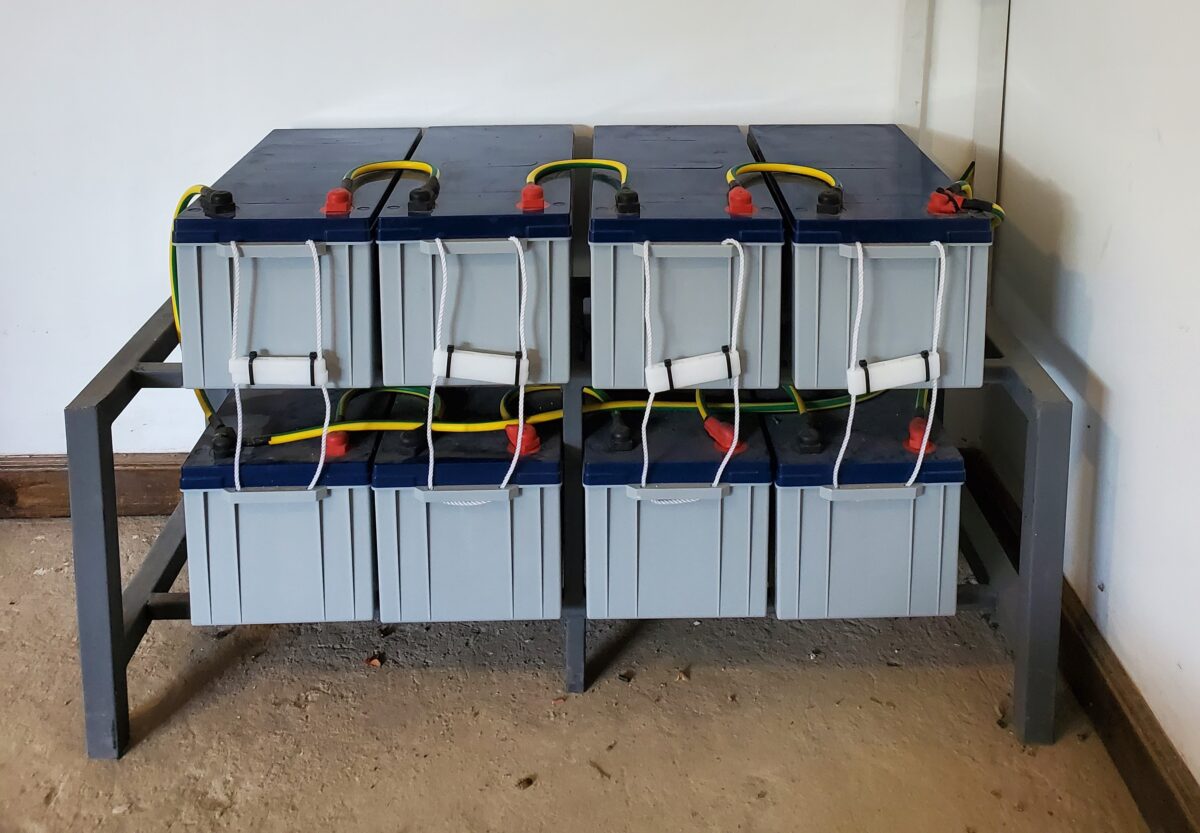From pv magazine Germany
As electricity markets fluctuate and energy prices rise, German households are increasingly seeking self-sufficiency with rooftop PV systems and batteries. About 70% of new residential systems in Germany now include home storage. However, not all claims about battery storage use are accurate.
In order to counter false expectations, Verbraucherzentrale NRW has clarified the five main mistakes that could be made when buying a residential storage system.
1: Battery storage cannot be installed at a later stage
This is not true. Verbraucherzentrale NRW said that integrating battery storage later is achievable with a hybrid inverter in a PV system. Retrofitting is also feasible with a conventional inverter, even after many years of PV system operation.
2: The larger the battery, the better
“This is wrong,” the consumer group said. Although battery storage systems are still expensive, they should not be oversized for economic purposes. As a rule of thumb for the appropriate size of storage, they said that every 1,000 kWh of annual electricity demand justifies 1 kWh of storage capacity. In other words, with an annual electricity demand of 5,000 kWh, a storage system should have a capacity of 5 kWh. Consumers should also consider the size of a PV system and remember that rather small systems rarely produce enough surplus power to charge large battery storage.
3: You can always save money by using battery storage
“This is another misconception,” the association said, noting that residential batteries still have high upfront costs. This is only the case if the sale of excess solar power into the grid over the estimated service life is higher than the purchase cost of the battery. Verbraucherzentrale NRW offers calculations and estimates as to whether the savings to be expected are higher than the purchase price.
4: With a battery storage system, electricity can be stored in the summer for the winter
Some battery providers use this narrative to advertise their products. Verbraucherzentrale NRW said that the residential batteries that are currently available on the market can only be used to shift excess solar power for consumption in the evening or at night, with no seasonal storage being possible.
5: With battery storage, users always have electricity and are independent of the power grid
Verbraucherzentrale NRW, which is based in in North Rhine-Westphalia, provides a resounding “no” in response to this. Households remain reliant on the technical connection to the public grid, even with PV systems and storage. In cases of power failure, standard photovoltaic systems and home storage systems cease to supply energy unless equipped with an emergency power or backup system, an addition that Consumer advocates estimate to cost between €500 ($540) and €2,000.
“It is important to be aware of the personal goals of using photovoltaics in conjunction with battery storage and then to obtain comprehensive information,” said Stefan Hoffmann, an energy analyst at Verbraucherzentrale NRW.
In March, Verbraucherzentrale NRW warned about a series of myths that consumers should know when buying residential PV systems.
“It is important to be aware of the personal goals of using photovoltaics and then to find out more. In this way, disappointments can be avoided and solar power can be used really efficiently,” said Sören Demandt, a digital energy transition analyst for Verbraucherzentrale NRW.
This content is protected by copyright and may not be reused. If you want to cooperate with us and would like to reuse some of our content, please contact: editors@pv-magazine.com.




I’ve never seen a hybrid system that won’t provide at least some supply when the grid goes down. The author(s) [and response providers] seem to have little knowledge of how these things actually function outside of what they’ve read about.


In the last 25 years (my own company) I’ve done plenty of hybrid systems including grid- tire with battery back up. I’ve also done remote islands and mountain cabins, boats, RVs, as well as municipal, commercial, and residential properties. Way back before it was ‘in vogue.
Where space and weight would allow, we would usually recommend a 3 day reserve (used very conservatively) for areas that might experience long grid outages, then a small fossil fueled generator for a recharge for excessive cloud cover and longer outages. (“That way you can run your generator for a few hours, rather than 24/7”).
I guess it’s just human nature to want very simplified answers to more complex questions with multiple variables (lifestyle, personal habits and priorities, building type and shading issues, absolute needs, localized weather, etc). — being able to answer all of these is what kept me in business.
I find it *interesting* that still so few have this knowledge and skill-set.
This is a very good post & indeed, lacxk of knowledge and skills sets is interesting – still there are plenty of policy wonks around, doubtless they will save the planet.